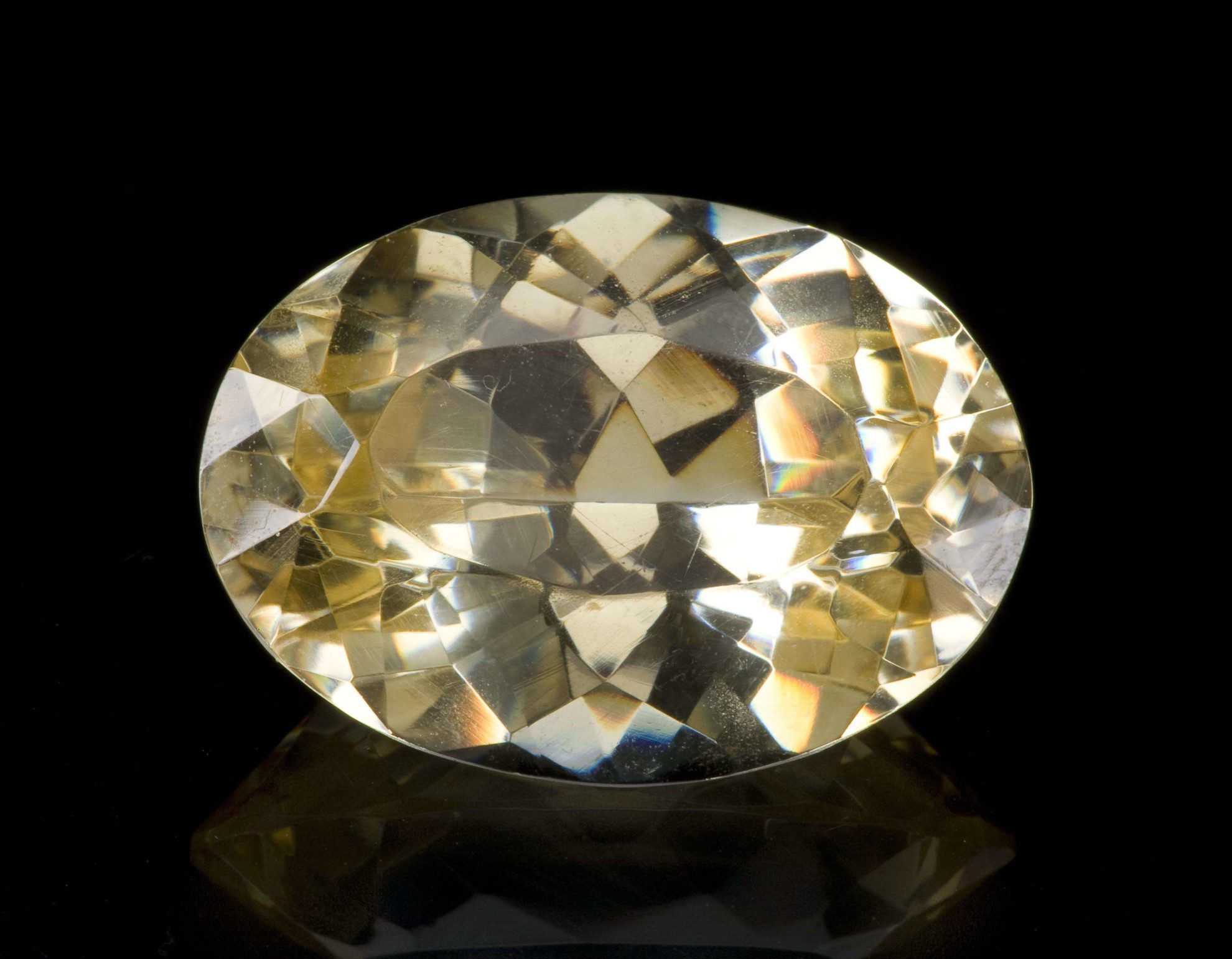Anglesite Value, Price, and Jewelry Information
Although anglesites with pale colors can show great dispersion and brightness, they’re difficult to cut and inadvisable to wear. Faceted pieces are true rarities, seldom seen except in very complete gem collections.
2 Minute Read
Although anglesites with pale colors can show great dispersion and brightness, they’re difficult to cut and inadvisable to wear. Faceted pieces are true rarities, seldom seen except in very complete gem collections.
Start an IGS Membership today
for full access to our price guide (updated monthly).Anglesite Value
What is Anglesite?
Where anglesite occurs massively, it serves as a lead ore. This is its principal use.
Does Anglesite Make a Good Jewelry Stone?
Anglesite's fire or dispersion equals that of diamond (0.044). If properly faceted, this gem can also show magnificent brilliance. However, gem cutters rarely facet this material for jewelry use. Its hardness only ranges from 2.5 to 3, and its crystals have good cleavage. This makes faceting difficult. Furthermore, anglesites contain lead. When cutting this material, faceters should avoid accidentally ingesting or inhaling particles and wash their hands.
Since such a soft stone can be scratched very easily, which can release small particles of the gem, jewelry use is not recommended. Reserve anglesites for display in mineral or gem collections.
How Can You Identify Anglesites?
Anglesite's specific gravity (SG) of 6.30 to 6.39 places it among the densest gem materials. Testing for SG can usually distinguish it from gems of similar appearance. However, two other rarely faceted collector's gemstones have a comparable range of colors, hardness, and SG. Like anglesite, cerussite and phosgenite can be colorless as well as white, grayish, yellowish, or greenish. Their fluorescence under ultraviolet light (UV) can also appear yellowish.
Comparison of Selected Physical and Optical Properties of Anglesite, Cerussite, and Phosgenite
| Hardness | SG | Fluorescence in UV | Refractive Index | Optic Character | |
| Anglesite | 2.5-3 | 6.30-6.39 | Weak yellowish. | a = 1.877; b = 1.883; γ = 1.894 | Biaxial (+) |
| Cerussite | 3-3.5 | 6.55 | Can be yellow in LW. Pale blue/green in SW. | a = 1.804; b = 2.076; γ = 2.079 | Biaxial (-) |
| Phosgenite | 2-3 | 6.13 | Strong yellowish. | o = 2.114-2.118; e = 2.140-2.145 | Uniaxial (+) |
A refractive index and an optic character reading with a refractometer and/or polariscope may be the most effective way to distinguish these gems. However, keep in mind that phosgenite may be anomalously biaxial. Some greenish phosgenites may show weak pleochroism, while anglesite has none.
Are There Synthetic Anglesites?
Laboratories have synthesized anglesite crystals for geological research. However, there is no known use of this material for jewelry purposes.
Enhancements
In the early 1980s, amber-red anglesites from Touissit, Morocco were found to be the result of bleaching colorless and pale yellow crystal specimens. This treatment produced surface-deep colors. Only immersion in a bromide-water solution could reverse this coloration.
Where are Anglesites Found?
Although many localities across the globe can potentially yield gemmy crystals, only a few produce colorless and pale brown specimens.
Touissit, Morocco produces gem crystals in immense sizes for this species.
Tsumeb, Namibia produces large transparent yellowish crystals and, sometimes, gemmy colorless specimens.
Other notable gem-quality sources include:
- United States: Arizona; Coeur d'Alene district, Idaho; New Mexico; Chester County, Pennsylvania; Tintic, Utah.
- Broken Hill, N.S.W., Australia; Brazil; Germany; Sardinia, Italy; Chihuahua, Mexico; Russia; Slovenia; Dundas, Tasmania; Tunisia; England, Scotland, Wales, United Kingdom.
Stone Sizes
Faceted anglesites typically range from 1 to 6 carats. Very rarely does this material occur large enough to cut anything bigger than this. However, some rough, notably from Namibia and Morocco, has yielded 100+ carat gems. One such stone from Tsumeb, at 300 carats, broke during cutting!
- Devonian Group (Calgary, Alberta, Canada): 88.75 (yellow, coffin-shaped triangle, Tsumeb, Namibia).
- Royal Ontario Museum (Toronto, Ontario, Canada): 23.62 (colorless, step cut, Tsumeb).
- National Museums of Canada (Ottawa, Ontario): 25.90 (yellow, scissors cut, Morocco).
- Private Collections: 126 (light golden brown, Morocco); 73 (yellow-orange, cushion cut, Morocco); 63 (lemon yellow emerald cut, Morocco); 171.12 (medium orange, Morocco); 169 (oval, Morocco).
Angelsite Care
Clean anglesites with a soft brush, mild detergent, and warm water. For more care recommendations, consult our gemstone jewelry care guide.
Joel E. Arem, Ph.D., FGA
Dr. Joel E. Arem has more than 60 years of experience in the world of gems and minerals. After obtaining his Ph.D. in Mineralogy from Harvard University, he has published numerous books that are still among the most widely used references and guidebooks on crystals, gems and minerals in the world.
Co-founder and President of numerous organizations, Dr. Arem has enjoyed a lifelong career in mineralogy and gemology. He has been a Smithsonian scientist and Curator, a consultant to many well-known companies and institutions, and a prolific author and speaker. Although his main activities have been as a gem cutter and dealer, his focus has always been education. joelarem.com
International Gem Society
Related Articles
Black Diamond Value, Price, and Jewelry Information
Chameleon Diamond Value, Price, and Jewelry Information
Gray Diamond Value, Price, and Jewelry Information
Green Diamond Value, Price, and Jewelry Information
Latest Articles
Pearl Simulants: How to Spot Faux Pearls
Opal Buying Guide
Amethyst Sources Around the World: The Geological Story Behind These Purple Gemstones
Brazilianite Value, Price, and Jewelry Information
Never Stop Learning
When you join the IGS community, you get trusted diamond & gemstone information when you need it.
Get Gemology Insights
Get started with the International Gem Society’s free guide to gemstone identification. Join our weekly newsletter & get a free copy of the Gem ID Checklist!
